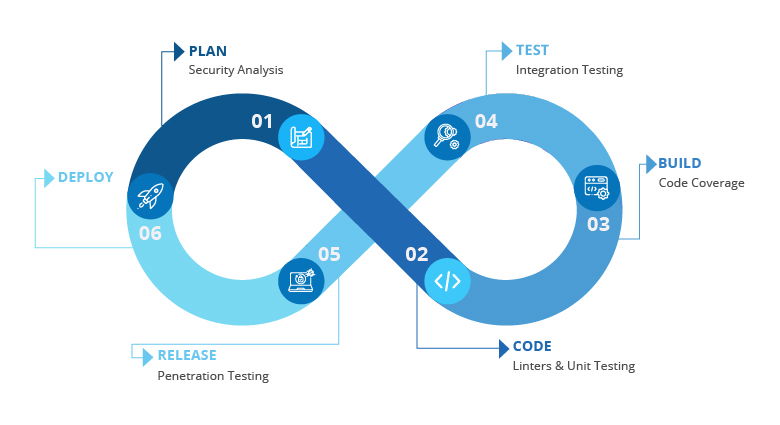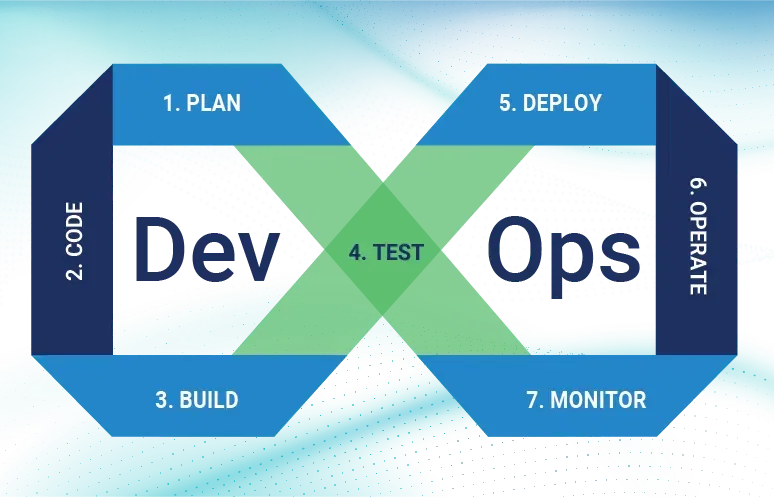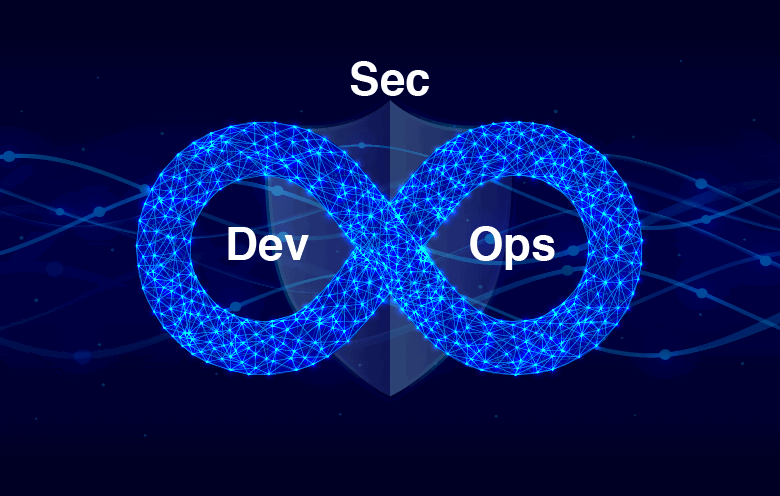Businesses are under increasing pressure to deliver secure and reliable software applications. However, the traditional approach to software development, which separates security from development and operations, is no longer sufficient. This approach can lead to security vulnerabilities that can be exploited by attackers, resulting in data breaches, financial losses and reputational damage.
Traditionally, software development followed a linear process where development, security, and operations were considered as separate and independent stages. However, with the rise of cybersecurity threats and the need for faster software delivery, organizations recognized the importance of incorporating security measures throughout the development cycle.
54% of respondents say that the reason for embracing DevSecOps best practices was to improve security, quality, and/or resilience. – A survey by Security Compass
DevSecOps is a security-focused approach to software development that integrates security practices into the entire software development lifecycle. By embedding security into every stage of the development process, DevSecOps helps to identify and address security vulnerabilities early, reducing the risk of security breaches.
DevSecOps promotes collaboration and communication among developers, security teams and operations teams. Integrating security practices into the development process ensures that security is not a standalone function but an inherent part of the entire software development pipeline.
Key principles of DevSecOps
Shift-Left: This principle emphasizes addressing security concerns as early as possible in the SDLC. By integrating security measures in the early stages, such as design and development, potential vulnerabilities can be identified and resolved before they become more challenging and costly to fix.
Automation: DevSecOps encourages the use of automation tools and processes to streamline security practices. Automated security testing, continuous integration/continuous deployment (CI/CD) pipelines, and configuration management are examples of automation that can improve efficiency and accuracy while reducing human error.
Collaboration: Effective collaboration between development, security and operations teams is crucial. Sharing knowledge, expertise, and responsibilities ensures that security requirements are met without compromising development speed or operational efficiency.
Continuous monitoring: DevSecOps emphasizes continuous monitoring of applications and infrastructure to detect security threats and vulnerabilities. This includes real-time monitoring, log analysis and threat intelligence to identify and respond to security incidents promptly.
Read more about DevSecOps best practices.
Benefits of DevSecOps
- Increased security: DevSecOps integrates security practices into the entire software development lifecycle (SDLC). This means that security is considered from the very beginning of the development process, not as an afterthought. By identifying and addressing security vulnerabilities early in the development process, DevSecOps helps to reduce the risk of security breaches and data leaks.
- Improved efficiency: Automation helps to streamline the software development and deployment process, reducing manual effort and errors. This leads to faster time-to-market and improved productivity.
- Enhanced collaboration: DevSecOps promotes collaboration between development, security, and operations teams. This helps to ensure that security requirements are met without compromising development speed or operational efficiency.
Key components of DevSecOps
Automation plays a crucial role in integrating DevSecOps into the continuous integration/continuous deployment (CI/CD) pipeline. It enables the seamless integration of security practices and accelerates the software development and deployment process while maintaining high security standards. Here’s how automation is used in the DevOps pipeline with DevSecOps:
Continuous integration (CI):
Automated build and test: Automation tools are used to automatically build and test code changes as soon as they are committed to the version control system. This includes compiling the code, running unit tests and performing code quality checks. Security tests such as static code analysis and vulnerability scanning can also be automated to identify security issues early on.
Automated code review: Automation can be used to enforce coding standards and conduct automated code reviews. This ensures that code changes meet security requirements.
Continuous deployment (CD):
Infrastructure as Code (IaC): Automation techniques like configuration management and infrastructure orchestration allow for the provisioning and management of infrastructure resources as code. Infrastructure configurations can be version-controlled and automatically deployed, ensuring consistency and reducing the risk of misconfigurations that could introduce security vulnerabilities.
Deployment automation:
Automation tools help streamline the deployment process by automating the packaging, deployment and configuration of applications. This reduces manual effort and potential errors during deployments. Security controls and configurations can be integrated into the automated deployment process to enforce security measures consistently.
Security testing:
Automated security testing is an essential part of DevSecOps in the CD phase. This includes dynamic application security testing (DAST), vulnerability scanning, penetration testing and security configuration verification. Automation tools can execute these tests as part of the deployment pipeline, providing quick feedback on any security vulnerabilities or misconfigurations.
Security monitoring and incident response:
Log analysis and alerting: Automation tools can collect and analyze log data from various sources, including applications, infrastructure, and security systems. Automated log analysis can help identify security events, anomalies, and potential threats. Alerts and notifications can be set up to trigger automated responses or notify security teams for immediate action.
Incident response automation: Automated incident response workflows can be set up to handle security incidents efficiently. This may include automated containment measures, automated data backups, and predefined incident response playbooks to guide security teams in responding to specific types of incidents.
By integrating automation into the CI/CD pipeline, organizations can achieve faster, more reliable and secure software delivery. Automation helps minimize manual effort, reduces human errors, and ensures consistent application of security measures throughout the development and deployment processes. It enables DevSecOps practices by embedding security into every stage of the pipeline, making security an integral part of the software development lifecycle.
Adopt DevSecOps for business transformation
By adopting DevSecOps practices, organizations can create a more secure software development process that minimizes the risk of security breaches, reduces vulnerabilities and enables faster and more reliable software delivery.
DevSecOps is a security-focused approach to software development that integrates security practices into the entire software development lifecycle. It emphasizes the importance of collaboration and communication between development, security and operations teams. Automation plays a crucial role in integrating DevSecOps into the continuous integration/continuous deployment (CI/CD) pipeline. By integrating automation into the CI/CD pipeline, organizations can achieve faster, more reliable and secure software delivery.
Engage with a DevSecOps consulting firm to obtain unmatched expertise in resolving the complexities of implementation and ensuring optimal outcomes for your organization. We will assist you in taking advantage of the most recent DevSecOps advancements and maximizing your business potential with our industry-leading experience and proactive approach to emerging trends. Contact our DevSecOps engineers today to discuss further.





